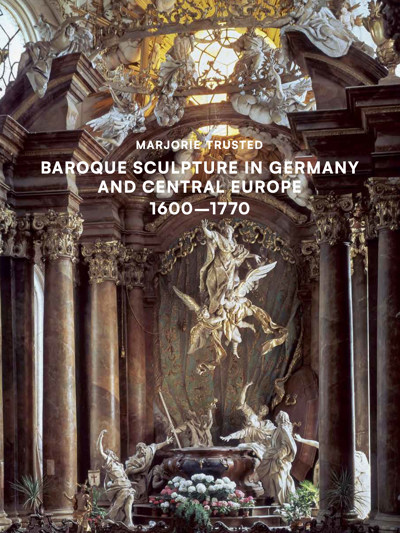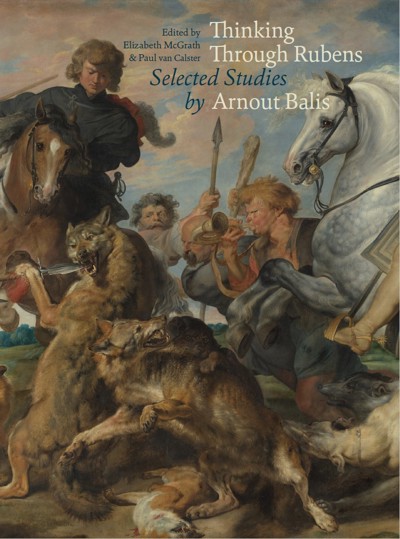
Reimagining the Ballet des Porcelaines
A Tale of Magic, Desire, and Exotic Entanglement
Meredith Martin (ed)
- Pages: 168 p.
- Size:220 x 280 mm
- Illustrations:84 col.
- Language(s):English
- Publication Year:2022
- € 75,00 EXCL. VAT RETAIL PRICE
- ISBN: 978-1-912554-81-2
- Hardback
- Available
In 1739 at a château outside of Paris, a group of artists and aristocrats staged a ballet pantomime known as the Ballet des Porcelaines and sometimes also as The Teapot Prince.
"C'est un livre passionnant, que les amateurs n'hésitent pas à le mettre en bonne place dans leur bibliothèque !" (Michel Odin, dans: Danser, N°397, septembre 2022, p. 45)
Meredith Martin is Associate Professor of Art History at New York University and the Institute of Fine Arts. Specializing in European art of the long eighteenth century, she has published widely on gender and architectural patronage as well as maritime art, mobility, and exchange in the early modern world.
In September 1739 at the château de Morville near Paris, a group of elite amateur artists staged a ballet pantomime known as the “Ballet des Porcelaines,” and sometimes also as “The Teapot Prince.” Written by the comte de Caylus, with music by Grandval, it tells the story of a prince who searches for his beloved on a faraway island ruled by an evil magician. The magician has turned the island’s inhabitants into porcelain, an event the audience witnesses in the form of a male and female singer who spin around on stage until they transform into vases. Aside from the libretto and the score, nothing survives of the Ballet des Porcelaines. The costumes and choreography are unknown. Although it inspired later famous ballets featuring sleeping beauties and porcelain princesses, it seems to have been staged only twice: first in 1739 and again two years later on the grounds of the estate, next to a lake encircled by vases and an illuminated arch suggesting a nighttime performance. The château’s owner served as France’s foreign minister and promoted trade with Asia. We can assume some kind of chinoiserie imagery and context for the ballet, which can be interpreted both as a standard fairy tale love story and as an allegory for the intense European desire to know and steal the secrets of porcelain manufacture. The ballet is an example of the deep intertwining of visual and performing arts in eighteenth-century France, and to an enchantment with Asia embodied on stage and in life by porcelain goods. The plot’s animation of porcelain also relates to a period understanding of the permeable boundary between persons and things manifested in a variety of cultural forms. The ballet exemplifies the profound sense of magic, mystery, and desire that porcelain instilled in European viewers (who referred to it as “white gold”), an effect that is lost on many museumgoers today.
Preface and Acknowledgments
Meredith Martin
Contributors
I HISTORICAL REIMAGININGS
Once Upon a Time at the Château de Morville: Commerce, Colonialism, and Chinoiserie in the Ballet des Porcelaines
Meredith Martin
My Porcelain Sickness
Phil Chan
Conjuring 1740: A Tale of Europe’s Obsession with Porcelain
Charlotte Vignon
II ARTISTIC INTERVENTIONS
Costume Design: Q&A with Harriet Jung
Meredith Martin
Choreography: Q&A with Xin Ying
Meredith Martin
Entering the Ivory Tower of Baroque Ballet
Patricia Beaman
Musically Steeping a Pot of Tea
Leah Nelson
Finding the Sound in Between
Sugar Vendil
III THE LOST BALLET
The Manuscript: Libretto and Score
Le Prince Pot-à-Thé: Ballet Pantomime
French Transcription
Dominique Quéro
The Teapot Prince: A Pantomime Ballet
Annotated English Translation
Christine Jones
IV CONTEMPORARY RESTAGINGS
Photographs of the MET Peformance, December 6, 2021
Making the Porcelain Dance
Wolf Burchard, The Metropolitan Museum of Art, New York
Chinese Fantasies of Porcelain on the Cusp Between Life and Death
Judith T. Zeitlin, The University of Chicago
Living Things or the Collector as Audience:Animate Porcelain Dancers
Elizabeth Rouget, Princeton University
A Smash Hit in the Making
Mia Jackson and Kate Tunstall, Waddesdon Manor and University of Oxford
A Teapot Prince and His Enchanted Palace: The Royal Pavilion, Brighton
Alexandra Loske, The Royal Pavilion and Museums Trust Brighton & Hove
A Porcelain Room and a Teapot Prince:Maria Amalia’s Salottino di porcellana and Le Prince Pot-à-Thé in Naples
Sarah K. Kozlowski and Sylvain Bellenger, The Museum and Royal Park of Capodimonte, Naples
Palazzo Grassi or the Past Revisited
Bruno Racine, Palazzo Grassi, Venice
The Sèvres Manufactory: Three Centuries of a Ballet of Porcelain
Romane Sarfati and Charlotte Vignon, Sèvres–Manufacture et musée nationaux
Works Cited





